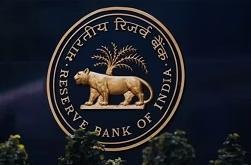The Insolvency and Bankruptcy Code (IBC) of India is a comprehensive law enacted in 2016 to streamline and expedite the resolution of insolvency and bankruptcy proceedings . It aims to consolidate and amend the laws relating to reorganization and insolvency resolution of corporate persons, partnership firms, and individuals .
Key Objectives:
- Resolution: To facilitate the resolution of insolvency in a time-bound manner .
- Maximization of Asset Value: To maximize the value of assets of corporate debtors .
- Promoting Entrepreneurship: To promote entrepreneurship and credit availability .
- Balancing Interests: To balance the interests of all stakeholders .
Key Features:
- Applicability: The IBC applies to companies, Limited Liability Partnerships (LLPs), partnership firms, and individuals .
- Insolvency Resolution Process: The Code outlines a clear and structured process for insolvency resolution, with strict timelines .
- Insolvency Professionals (IPs): IPs are licensed professionals who manage the insolvency resolution process .
- Information Utilities (IUs): IUs collect, collate, and disseminate financial information to be used in insolvency proceedings .
- Adjudicating Authorities: The National Company Law Tribunal (NCLT) is the adjudicating authority for companies and LLPs, while the Debt Recovery Tribunal (DRT) is the adjudicating authority for individuals and partnership firms .
- Committee of Creditors (CoC): The CoC, comprising financial creditors, makes key decisions during the insolvency resolution process .
- Moratorium: A moratorium is imposed during the insolvency resolution process, preventing any legal action against the corporate debtor .
- Corporate Insolvency Resolution Process (CIRP):
- CIRP can be initiated by a financial creditor, an operational creditor, or the corporate debtor itself .
- A resolution plan, if approved by the CoC, is binding on all stakeholders .
- If a resolution plan is not approved within the stipulated time, the corporate debtor goes into liquidation .
Recent Amendments and Developments:
- Amendments have been made to the IBC to address implementation issues and improve the efficiency of the insolvency resolution process .
- These amendments aim to clarify provisions, streamline procedures, and protect the interests of various stakeholders .
Impact:
- The IBC has significantly improved the recovery rate for creditors .
- It has promoted discipline among borrowers and reduced non-performing assets (NPAs) in the banking sector .
- The IBC has also enhanced India’s ranking in the World Bank’s Ease of Doing Business index .

























